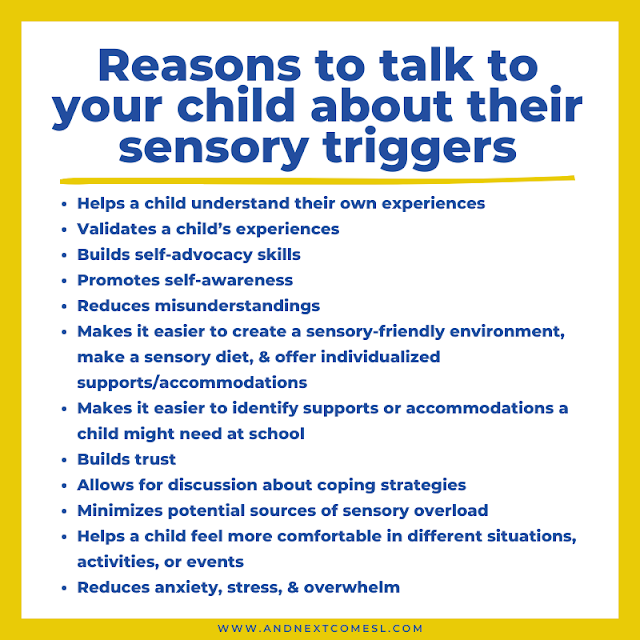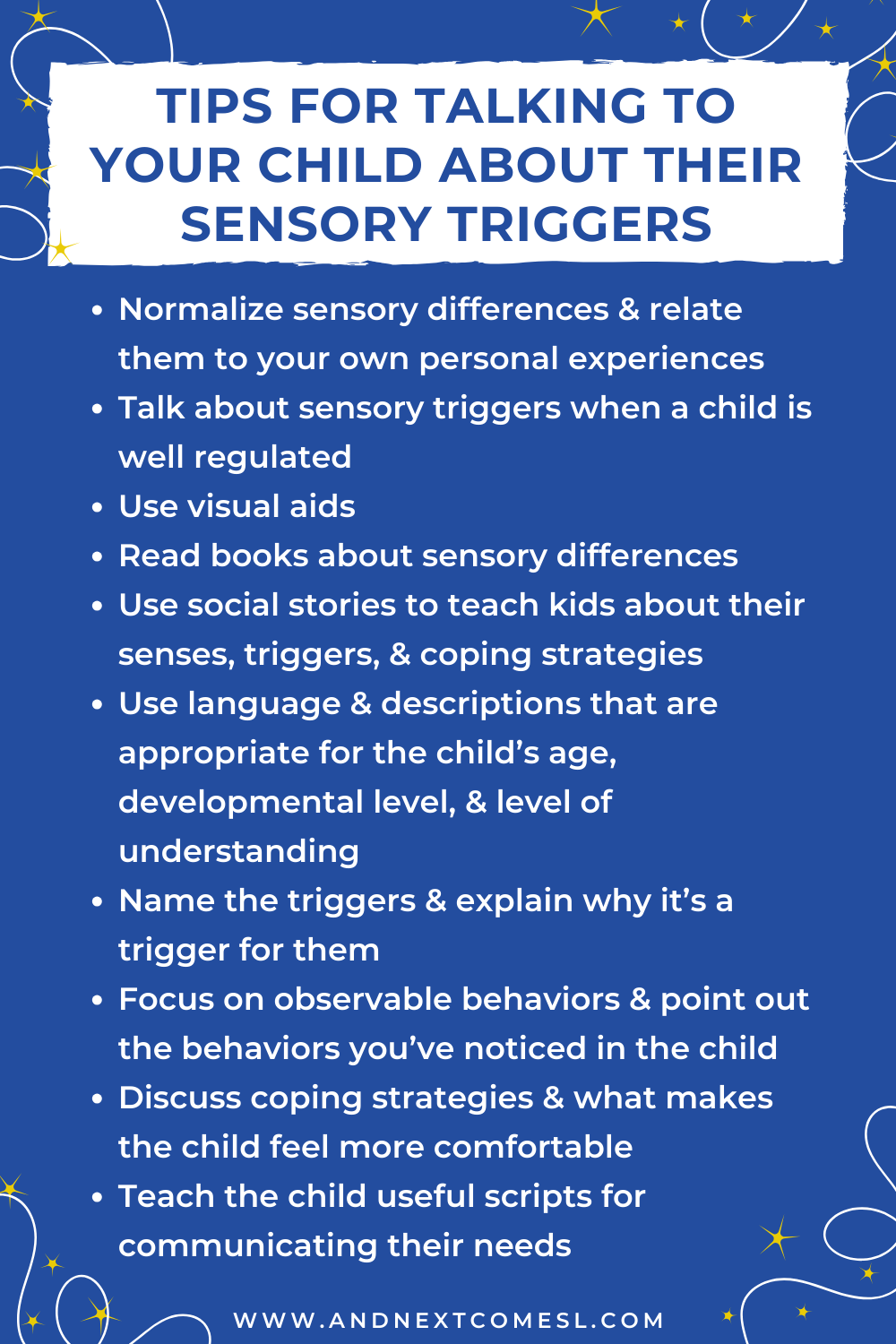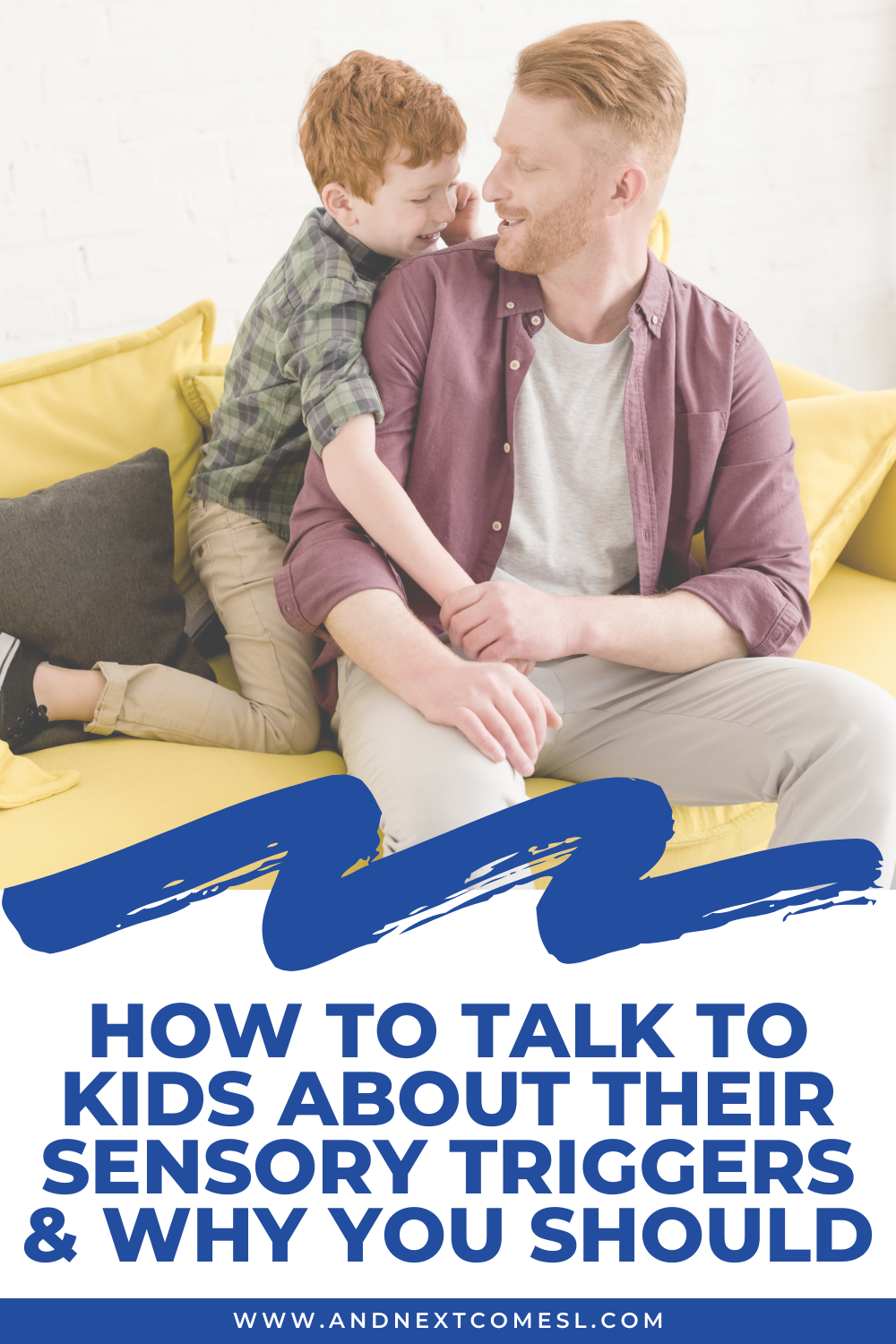It's important to talk to kids about their neurology, their learning styles, and their needs. So, for instance, that means telling them that they're hyperlexic or autistic and discussing different traits related to these identities. It also means highlighting their strengths and talking about their sensory needs, their preferences, and their triggers (our focus here).
But it's one thing to know what sensory triggers are or how to identify them and it's another thing to know how to talk to kids about their sensory triggers. Or why you even should. (Obviously, I think you should hence this post.)
Below we'll take a look at some of the benefits of discussing sensory triggers with your child, as well as some practical tips for doing so. And hopefully these tips will make those conversations go a bit easier.
Why You Should Talk to Your Child About Their Sensory Triggers
Before we dive into some practical strategies, let's first explore why it's important to discuss sensory triggers with your child. In other words, the benefits.
Here are some reasons why it's important to discuss these triggers with your sensory sensitive child:
- Helps a child understand their own experiences and gives them the language to communicate those experiences
- Validates a child's experiences (i.e., you're acknowledging that their sensory sensitivities are indeed real)
- Builds self-advocacy skills
- Promotes self-awareness
- Reduces misunderstandings between parent and child because both can be on the same page about the child's sensory experiences
- Makes it easier to create a sensory-friendly environment, make a sensory diet, and offer individualized supports/accommodations that are tailored to the child's needs
- Makes it easier to identify supports or accommodations a child might need at school
- Builds trust
- Allows for discussion about coping strategies so a child knows what to do when they feel overwhelmed or uncomfortable
- Minimizes potential sources of sensory overload because you can make a safety sensory plan ahead of time
- Helps a child feel more comfortable navigating different situations and participating in activities or events (i.e., they're no longer caught off guard because they know what might be causing them overwhelm)
- Reduces anxiety, stress, and overwhelm
As you can see from this list, there are a wide range of benefits to talking to kids about their sensory needs and triggers. So, obviously, it's a good thing to do. But how do you start the conversation? What do you talk about? What should you focus on? Well, that's what we'll cover next.
Tips for How to Talk to Kids About Their Sensory Triggers
One of the most important things to keep in mind is that talking about sensory triggers with a child isn't just some one-time conversation. It's an ongoing process where you talk about it here and there, off and on, and on a as-needed basis.
In other words, you can't just have one conversation and expect it to stick forever. Especially since triggers can change as a child grows.
So, keeping this point in mind, here are some tips for talking about sensory triggers with kids:
- Normalize sensory differences and relate them to your own personal experiences - That includes sharing about your own sensory experiences and sensory triggers.
- Talk about sensory triggers when a child is well regulated. Not when they are already stressed or overwhelmed.
- Use visual aids to help the child understand their sensory needs, triggers, and preferences
- Read books about sensory differences together - Doing so helps normalize sensory differences, gets kids thinking about their own sensory needs, and makes things more relatable to the child.
- Use social stories to teach kids about the 8 senses, sensory triggers, and different coping strategies - They can be a great way to introduce these topics to a child and help them understand their experiences.
- Use language and descriptions that are appropriate for the child's age, developmental level, and level of understanding - Keep things simple, use analogies, include examples, include their interests (if possible), and so on.
- Help identify a child's sensory triggers by simply naming them and explaining why it's a trigger for them - If you need help with identifying triggers, these tips might be helpful.
- Focus on observable behaviors (e.g., covering ears, running away, screaming) and point out the behaviors you've noticed in the child - Doing so makes it easier for the child to identify when they are overwhelmed or dysregulated.
- Discuss coping strategies and what makes the child feel more comfortable whenever they encounter sensory triggers
- Teach the child useful scripts for communicating their needs (e.g., self-advocacy scripts) and understanding their experiences (e.g., "It's too loud!") - Especially helpful if you have a hyperlexic learner or gestalt language processor who uses a lot of echolalia to communicate.
Remember, you might have to revisit this conversation with your child regularly. So keep communication open and check in frequently with your child.
And don't forget to consider other environments. For instance, sometimes you might notice different triggers in different settings. You might need to consider these common sensory triggers in the classroom, for instance.
Use this Social Story to Talk to Kids About their Triggers
If you need some help starting the conversation, try this sensory triggers social story from the shop. It is editable so you can customize it to fit your needs (i.e., you can simplify it for younger kids).
Grab your copy of the identifying sensory triggers social story
A Quick Recap of Talking to Your Child About Sensory Triggers
Remember, talking to kids about their sensory needs and triggers is an ongoing conversation. And an important conversation to have.
After all, talking about triggers helps kids understand their experiences, builds self-advocacy skills, reduces anxiety and overwhelm, and makes it easier to support and accommodate their sensory needs in a multitude of environments.
It's also important to remember that you want to talk to a child about their triggers when they're well regulated and calm. Not in the midst of sensory overload or in the middle of a meltdown.
You can start off by reading books, using visuals, and using social stories to normalize sensory differences and introduce the topic to kids. Then you can help name a child's triggers using language and descriptions that are appropriate for the child. And don't forget to point out the observable behavioral cues and discuss coping strategies that help the child feel more comfortable.
I really hope that you found these tips for how to talk to kids about their sensory triggers helpful.










